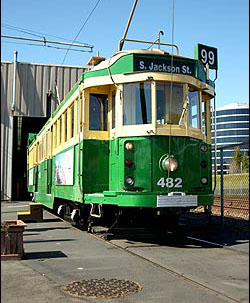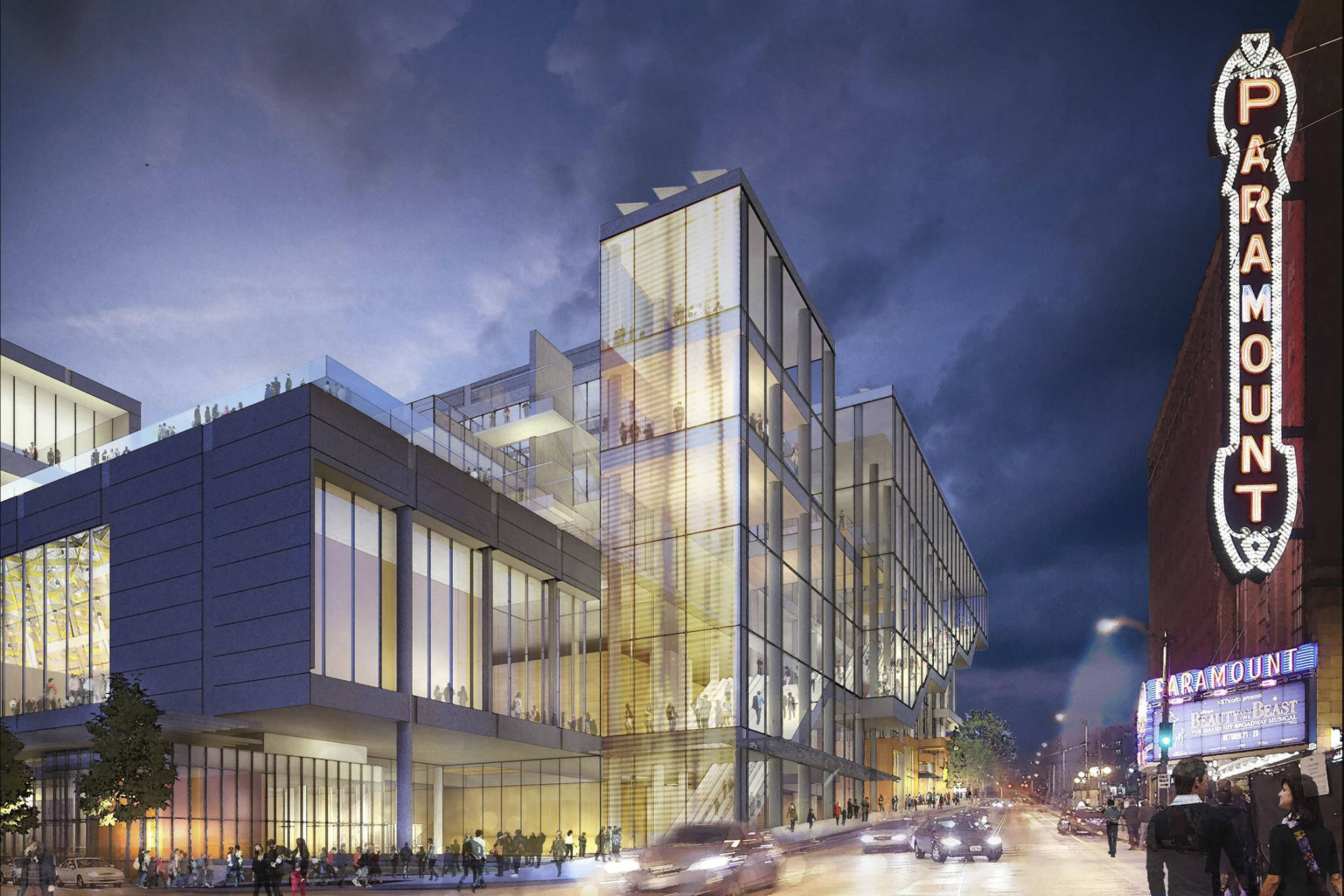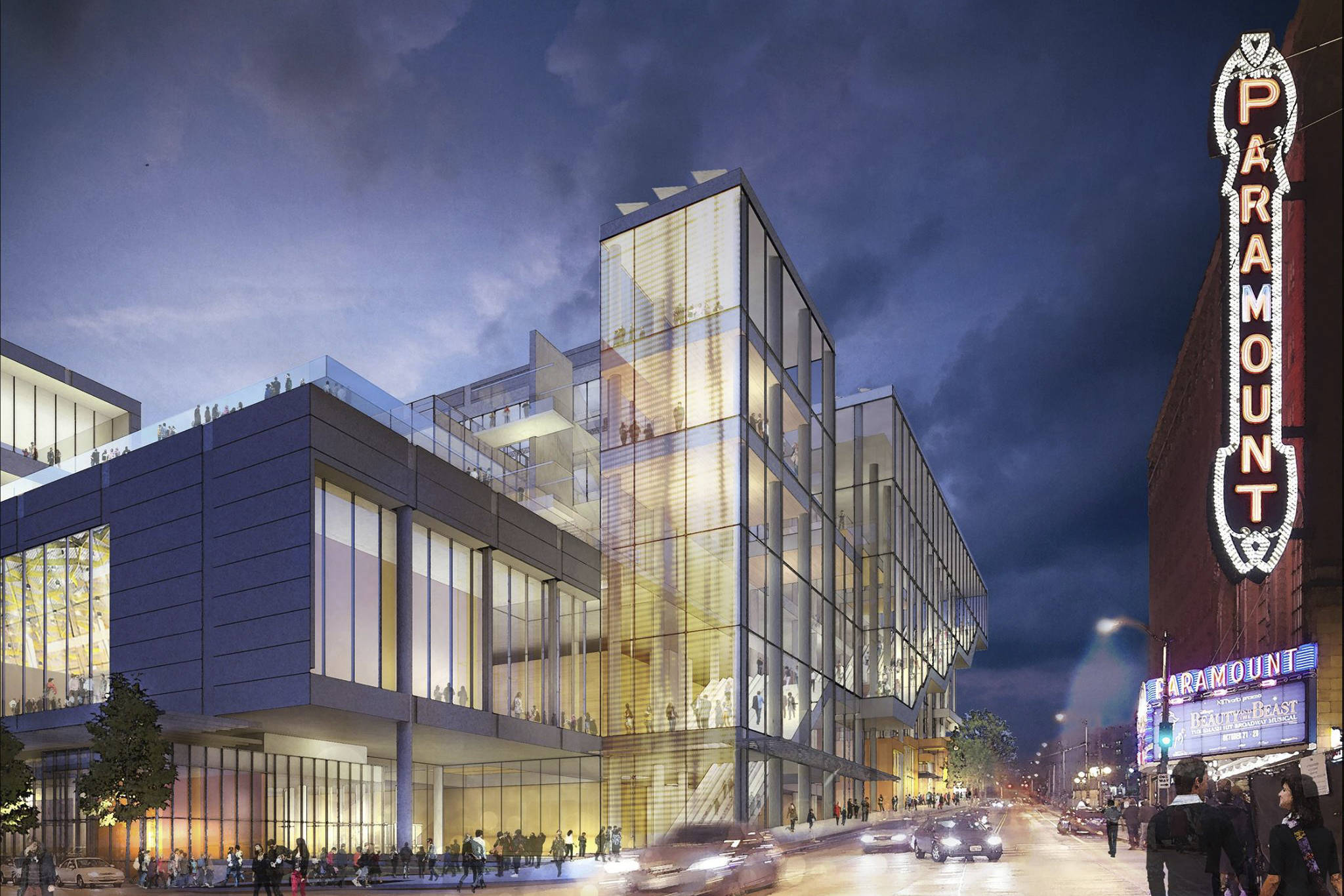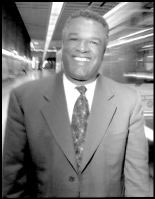Last week, Paige Miller became the Woman Who Saved the Trolley. On Wednesday, March 23, the Port of Seattle commissioner announced a plan to rescue the George Benson Waterfront Streetcar Line from extinction by extending the tracks 7,200 feet north, along Seattle’s Myrtle Edwards Park, and locating a needed maintenance barn somewhere in the port’s Elliott Bay Park, near the towering grain elevators at Terminal 86. With this one stroke, Miller simultaneously untangled a three-way bureaucratic snafu between the city of Seattle, King County, and the Seattle Art Museum (SAM) and helped her nascent campaign for Seattle City Council. The resulting hullabaloo says a lot about Seattle’s love affair with the trolley and the state of politics and transportation in the city.
Started in 1982, the two-mile Waterfront Streetcar, aka King County Metro Route 99, was built by the city with the leadership of then–City Council member George Benson, who died last year. King County Metro, the public transit agency, operates the streetcar, which runs from the International District to the south end of Myrtle Edwards Park. The trolley’s maintenance barn now sits in the park’s parking lot, which is about to be claimed by the Seattle Art Museum’s $85 million sculpture garden. The city, which owns the land there, and the county, which owns the barn, agreed to move the maintenance facility so the sculpture garden could slope down in terraces to the edge of Elliott Bay and to enable unobstructed views of the water and the Olympic Mountains. But the relocation proved more difficult than anticipated. Earlier this month, Metro announced that no acceptable relocation site had been found and that the line would probably be shut down forever, to be replaced by dolled-up buses. The public went berserk.
Businesses in Pioneer Square and along the waterfront were predictably outraged, but more striking was the fury of just average folks at the possible loss of this toy train. Make no mistake, the streetcar is not a rational transportation system. It would be a much better use of scarce transit funding, not to mention a much faster ride, to simply run buses along the trolley route. The 1924 streetcars, found by Benson on a trip to Australia, are antiques requiring two operators (almost all modern transit vehicles require one) and expensive daily maintenance. The trolleys carry an average of 449,000 riders a year, which sounds like a lot but really is nothing special compared to Metro bus routes. Mostly tourists ride the streetcar, although some commuters do also. The streetcars are a fun amenity for the hokey central waterfront and clearly have value to businesses and the public beyond their transportation utility.
Much of the dialogue that ensued after the proposed closure reflected a feeling that the rich and powerful elites who launched the sculpture garden were trampling on Seattle’s funky old-time charm. It’s not just at Myrtle Edwards Park that this battle is taking place, but throughout the city, especially in the South Lake Union neighborhood, where Mayor Greg Nickels wants to spend hundreds of millions of dollars in public money to aid billionaire Paul Allen’s development of that crusty old neighborhood into a 24/7 biotech wonderland. (See “A Gift That Gives Back,” p. 14.) Since Nickels wants to build a separate trolley and maintenance barn to spur South Lake Union’s development, the suspicions about local government’s inability to simply relocate the existing trolley’s maintenance barn were rife. North Seattle Industrial Association President Eugene Wasserman reflected this widespread view of events when he pledged to cancel his SAM membership in protest over the trolley’s problems. Says Wasserman: “Basically, the mayor has lined up for being a world-class design city. They want a new streetcar for the highly educated people in South Lake Union. They don’t want a tacky streetcar for tourists on the waterfront.” Wasserman found it unbelievable that Nickels and King County Executive Ron Sims, who has direct authority over Metro, couldn’t find a new site for the barn. “These guys know how to push hard, and I don’t have a sense that they are pushing hard at all,” Wasserman said. Throughout the process, however, Sims and Nickels claimed complete fealty to the waterfront trolley and pledged to preserve it.
Miller’s experience with the issue will not calm Wasserman’s suspicions. “The Port had proposed a couple of times in the past extending the trolley north,” says Miller. “We did not get a lot of interest from the city and Metro.”
Regina LaBelle, Mayor Nickels’ counsel and trolley point person, says she is not aware of any past proposal from the Port. As far as the mayor was concerned, however, says LaBelle, the northerly route was being actively considered but was entangled in funding problems.
As the crisis over the relocation of the trolley barn grew, Miller pondered the issue and began to sense an opportunity. “It seemed like an actionable moment,” she says. When she stepped into the bully pulpit last week, she had a compelling solution to offer. The Port would provide the land gratis and “would arrange for the track extension”—note the considerable wiggle room in that language—to the new site.
The track extension is expensive. Just laying track costs $600 to $1,000 per foot ($4 million to $7 million for 7,200 feet), not to mention the expense in possible necessary environmental mitigation for trolley tracks and the rerouting of the walking/bicycle path that runs through Myrtle Edwards. The cost led reformist Port Commissioner Lawrence Molloy to oppose Miller’s proposal if it involved the expenditure of any Port money. “There are a lot of other places in this region that need 7,200 feet of track,” says Molloy.
Miller says the Port might partner with other groups to fund the project. Right now, all she’s asking the city to provide is passage through Myrtle Edwards Park, which abuts the Port’s Elliott Bay Park, and the necessary permits. Miller wants the county to provide a new barn at a cost of around $2.5 million to $3 million. In return, the streetcar line would be saved, and many new riders could be added, since the new northern terminus would be at the Helix footbridge on the southern end of the Amgen campus. Suddenly, the trolley would better serve Elliott Avenue’s major employers—Amgen, the Seattle Post-Intelligencer, Holland America, and others—in addition to Queen Anne’s Uptown neighborhood of many residents and workers. To cap it all off, Miller says, the trolley can keep running from Amgen south to as far as the Seattle Aquarium during the eight to nine years the Alaskan Way Viaduct is being rebuilt, providing a lifeline to waterfront businesses and a mobility option for residents affected by the viaduct’s closure. (During viaduct work, the trolley would not serve the southern part of the waterfront or the International District.) Mitigation money from the multibillion-dollar viaduct project would be a natural source of financing for the trolley-extension project, although Miller is too savvy to come right out and say that.
The proposal also highlights how savvy Miller will be in her campaign for Seattle City Council Position 2, currently occupied by council transportation Chair Richard Conlin. In January, Miller joined that crowded contest, which includes three other challengers: King County Council transportation Chair Dwight Pelz, former Seattle Times and Seattle Post-Intelligencer writer and mayoral communications director Casey Corr, and former president of the Washington Environmental Council and lobbyist Darlene Madenwald.
For 17 years, Miller has been a Seattle Port commissioner, fighting to build the controversial third runway at Seattle- Tacoma International Airport, expanding opportunities for women and minorities in Port employment, and leading the charge to add risky real-estate development to the Port’s unwieldy portfolio. While her tenure has been substantive and rife with conflict, the position is part time and barely pays. Some have questioned whether Miller could stand out in the crowded field of City Council candidates. She certainly did last week. Miller found herself in the middle of a media frenzy, swamped by requests for TV, radio, and print interviews. It was the kind of publicity a politician cannot buy. Some groused that Miller was abusing her position as a Port commissioner to stump for City Council. But Conlin claimed he had solved the trolley crisis by focusing attention on the north parking lot of Qwest Field as a site for the barn, and Pelz last week held a “committee meeting” on the trolley, with attendees touring the facility and listening to presentations by Metro and SAM on the crisis. Yes, there were TV cameras along for the ride.
Miller’s proposal has been the only good news in the trolley imbroglio in months. That doesn’t mean it will work out or that it’s a great transportation investment, and it definitely is highly politicized. But sometimes politics leads to solutions the public really cares about—like a putt-putt, toot-toot trolley along the waterfront. Unfortunately, the streetcar also demonstrates one reason Seattle continues to have such terrible problems developing solutions to our real transportation problems—whimsy trumps reason.
Disclosure: The law firm that routinely represents Seattle Weekly, Davis Wright Tremaine, employs Paige Miller’s husband, attorney Bruce Johnson, who does occasional work for the paper.








